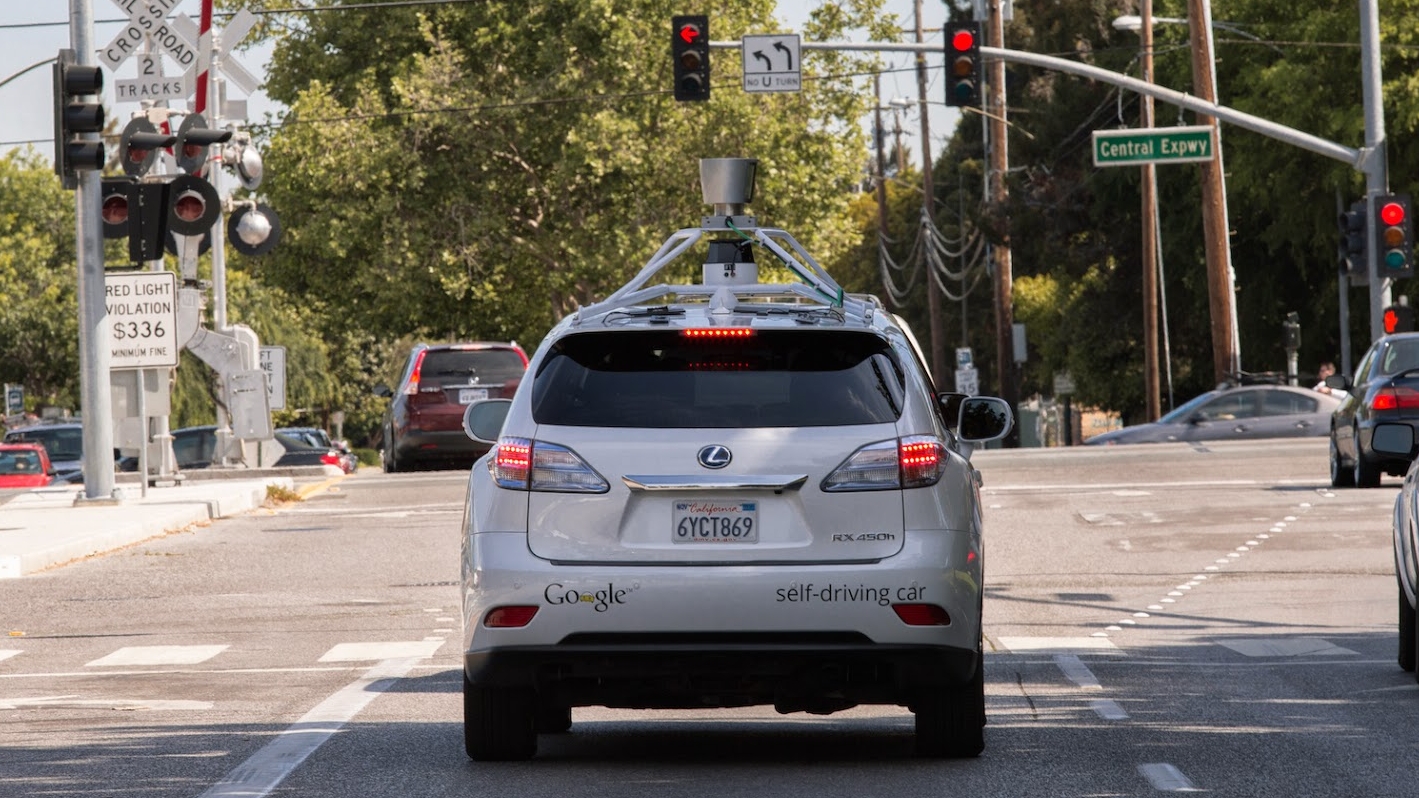Google's self-driving car just lost its squeaky-clean record [Updated]
Valentine's Day saw a Google Car-caused fender bender

Update: Google got back to us, and we've made changes in the following article to reflect its response.
Until recently, all accidents involving Google's self-driving cars had been caused by human drivers. That is, until Valentine's Day.
According to an accident report filed with the California DMV, a Google self-driving car hit the side of a bus while it was attempting to move into the center of a lane on February 14, 2016.
The report explains that the Google self-driving car, a Lexus RX450h, was attempting to turn right at an intersection, but had stopped due to sandbags on the side of the road. It began to move to the center of the lane to make the right turn and get around the sandbags just as a bus began approaching from behind.
The self-driving car and the in-car driver saw the bus approaching, but the driver and car "believed the bus would slow or allow the Google [autonomous vehicle] to continue." However, three seconds later, while Google's car was still in autonomous mode, it hit the side of the bus.
Luckily, no one was hurt, except for the Google car, which saw damage to its left front fender, front wheel and a driver side sensor. Google's car was only traveling at about 2 miles per hour (mph) and the bus at 15 mph.
Deeper learning of buses and larger vehicles
The California DMV began publishing all accident reports involving self-driving cars in the state last year, and the reports showed that each accident Google's self-driving car has been involved in since 2014 was caused by human error of one type or another.
Get daily insight, inspiration and deals in your inbox
Sign up for breaking news, reviews, opinion, top tech deals, and more.
While this may be the first accident a Google self-driving car has caused, in an advanced copy of Google's February monthly report provided to techradar that the company will publish tomorrow, Google implies again that it wasn't really at fault, saying both the car and the in-car test driver predicted that the bus "would yield to us because we were ahead of it."
Google says its assumed the bus would slow or stop in response, giving the Google car enough room to merge.
"And we can imagine the bus driver assumed we were going to stay put," the report reads. "Unfortunately, all these assumptions led us to the same spot in the lane at the same time. This type of misunderstanding happens between human drivers on the road every day."
The report also reveals that this accident comes just as Google began expanding the self-driving car's capability of hugging the far right of a lane that allows for two streams of traffic, before attempting to turn right. Google says it has now reviewed the accident and variations of it in a simulator, and has made appropriate "refinements" to self-driving car software.
And rather cuttingly, the report explains, "From now on, our cars will more deeply understand that buses (and other large vehicles) are less likely to yield to us than other types of vehicles, and we hope to handle situations like this more gracefully in the future."
Via Reuters